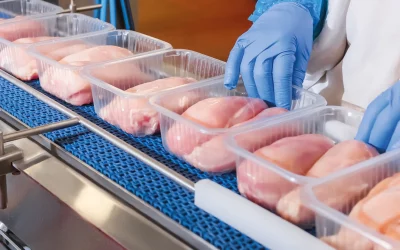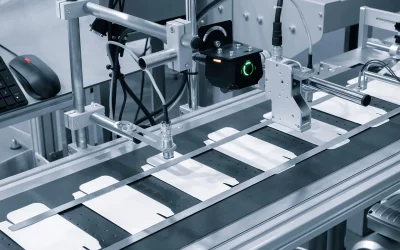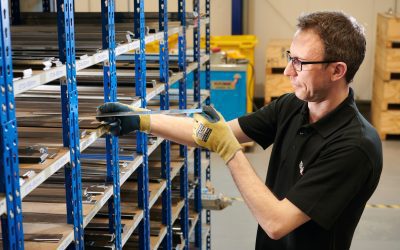Why selecting the right blades is so important
As we mentioned in the opening of this article, selecting the right kinds of blades for your processing operations is important.
But, why?
Well, there are several good reasons why the right knives can make a big difference to your business:
- Improved efficiency. With properly designed and manufactured machine blades, your processing machinery will be able to make more cuts, with less downtime, improving the overall efficiency of your operations.
- Improved accuracy and reduced waste. Say goodbye to rejected cuts and improperly portioned fish and seafood, with good quality knives. Quality knives will be able to provide accurate cuts time after time.
- Improved longevity. Good quality machine blades will last far longer than the cheaper options that are available on the market.
- Food-safe. When you buy high-quality machine blades from the likes of MRMK, you’ll know that you’re getting food-safe knives which are made from the very best stainless steel.
Common applications for fish and seafood processing blades and knives
Processing fish and seafood presents some unique challenges when compared to other types of meats and foodstuffs.
In order to select the right blades and knives for your processing operations, you need to give some thought as to what applications you’ll be using them for.
Below are some of the most common applications for fish and seafood machine blades.
De-heading
De-heading is an important part of fish processing given that the head of a fish is inedible and a significant part of the fish’s overall mass (the head can be up to 20% of a fish’s weight).
De-heading involves cuts which require a reasonable amount of force, so you will want to select blades/knives that are capable of withstanding this force repeatedly and have good tensile strength
Gutting/evisceration
Gutting (also known as evisceration) is the process of removing the fish’s internal organs and extraneous body parts.
This process is generally performed by specialised machines rather than by hand, with the main cut usually being a downward horizontal one through the belly. This cut is usually followed by the application of suction equipment to remove the unwanted internal organs.
These downward cuts require precision and consistency, so it’s important that you select blades that can provide this.
Removal of fins and belly flaps
For the removal of fins and belly flaps you will generally want to select mechanised scissors or a rotating disc knife.
These types of blades are the most common, although increasingly the fish processing industry is using automated fish-processing machines which use rotating knives to more efficiently remove fins and belly flaps.
Filleting
As you’ll be aware, filleting is one of the most complex and labour intensive tasks involved in the processing of fish and other seafood.
Whilst manual filleting has been a common practice, it has increasingly fallen out of favour due to the amount of time that is involved.
Instead, an increasing number of businesses are choosing to invest in filleting machines – particularly for the processing of saltwater fish. These machines remain relatively expensive though, so if you’re to yield sufficient value from them, it’s important that you select high-quality blades for use with them.
Skinning
Supermarkets, restaurants and other retailers are increasingly demanding that their processed fish are skinned.
As a result, fish processors are investing in automated skinning tools that use an oscillating knife powered by an electric motor and a set of compression springs to apply the downward cuts that efficiently remove the skin from fish.
As with the other fish processing machinery mentioned in this article, high-quality blades will make a noticeable difference to the performance and uptime of these machines.
Fish steaks
Whilst this is a more unorthodox application of fish processing machinery, it is possible to slice whole, de-headed fish to make steaks of varying sizes.
When applying this technique to small or medium sized fish a band saw will typically suffice.
However, if you want to apply this technique to larger fish with more substantial backbones, it’s recommended that you use rotating circular saws or automated cutters to achieve these cuts.
How to choose the best blades for your fish and seafood processing machinery
As you’ve just seen, there are multiple different cuts involved in the processing of fish, so it’s important that you select blades with the correct material properties to ensure consistent, accurate cuts.
Below the MRMK team has set out the key properties you should look for in order to choose the best blades for your fish and seafood processing machinery.
High-quality stainless steel
The most important thing to look for is the material of the blade itself. Get this right and you’ll be halfway to securing a high quality blade for your machinery.
Ideally, you’ll want to select a blade which is manufactured from the highest-grade stainless steel.
And, what better grade than Sheffield stainless steel can you get?
None!
Here at MRMK, we manufacture our blades right in the historical centre of the global stainless steel industry.
You’ll not find better steel than Sheffield steel.
OEM quality
We don’t blame you if you want to avoid paying the prices associated with OEM replacement blades.
But you shouldn’t have to sacrifice quality.
That’s why at MRMK we’ve made it our mission to create OEM quality blades (or better) at a fraction of the cost charged by OEM manufacturers.
Food safe
Obviously, if you’re selecting new blades for your fish processing machinery, you’ll want to select blades which are food safe.
At MRMK our fish and seafood processing blades and knives are manufactured from food-safe stainless steel, meaning that it is resistant to the most common forms of corrosion, is resistant to pitting, and doesn’t pick up odours or fragrances.
Easy to regrind
A good quality fish-processing blade isn’t a ‘one and done’ affair. Instead, you should expect a fish processing blade to not only have a long service life, but to be easily regrinded too.
Here at MRMK we deliberately design our fish processing blades and knives so that they are easy to regrind, thereby prolonging their service life and eking out as much value from your initial investment as possible.
Choose MRMK for your fish processing knives and blades
As you can see, selecting the right knives for your fish and seafood processing operations is more important than you may have initially realised.
If you want to select the very best knives and blades for your fish and seafood processing machinery, then speak to the team at MRMK today. We’re happy to discuss replacements for OEM blades or custom requests alike.
Find out more about MRMK’s machine knives for the fish and seafood processing industries now
For more machine knife buying guides and advice, read the MRMK News and Insights Hub…
Why Leading Brands Choose MRMK to Manufacture Their Machine Knives | 7 Food Industry Trends to Watch in 2022 | Choosing the Right Cutting Tools for Your Food Processing Operations



